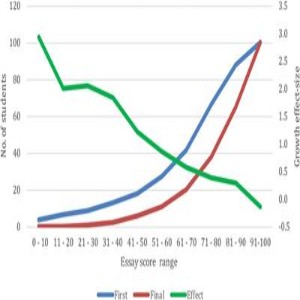Let me take a moment and speak directly to my fellow educational leaders, regardless of role. Here we are in June again, and from my years as a literacy coach, middle school principal, and instructional supervisor, I know how that feels.
We’re likely feeling exhausted. Many of us will be reflecting on the portion of the academic year behind us and starting to think about goals and objectives for the next semester or year ahead. If we’re in the Northern Hemisphere of the world, we are probably thinking about summer professional learning activities; if we’re not, we may be thinking about other professional learning activities that we can try to squeeze in. Even if we have a top notch faculty knocking it out of the park, we still have goals for improvement as part of a cycle of continuous improvement.
There are so many ideas, initiatives, and concepts calling for our attention. Where to start? Where to focus? What, in the end, will have the greatest impact? We simply can’t do it all, and we want to make sure that we put our efforts where they really matter and will make a difference.
So, maybe we’re thumbing through the latest copy of ASCD’s Educational Leadership focused on feedback, or maybe we’re taking a look at Frontier’ s hottest research, published over the last year. Perhaps we are truly devoted Turnitin users, and we’re reading through some of the company’s blog posts. Maybe we are true educational nerds and follow Dr. John Hattie on social media where we’ve seen that he’s published something new. Either way, our attention is grabbed, and we know in our heart of hearts that THIS is where we need to dive in: “Where to Next?” feedback.
This research quantifiably demonstrates that when “Where to Next?” feedback is delivered as part of a formative cycle, students are more likely to improve. Impact - isn’t that all we educators really want? When time and patience are in limited supply, we have to be very selective in how we leverage our resources. Years ago, I worked under a truly gifted superintendent as an instructional supervisor, and I was on the verge of becoming a building principal. I asked her what advice she had for me as I made my transition. “Patti,” she said, “You tell people what you value by how you spend your time and your money. Spend them both wisely.” I have never forgotten that advice, and it is certainly relevant today.
The truth is that every educator, and particularly educational leaders, have a limited supply of resources in both time and money. Trying to do it all will only exacerbate the overwhelming levels of stress and exhaustion educators around the world report feeling these days. In the end, we must make strategic choices. A strategy proven to impact student learning and growth is certainly a wise place to invest.
When we put it that way, it seems so obvious, so easy. We are going to focus on a research-based strategy that has a demonstrable impact on learning and growth. That impression, though, is misleading. It will take effort and commitment. We will have to consider both what we do and what we are choosing NOT to do; we’ll have to make hard decisions, and we will have to invest both time and money if it is going to be effective. “Where to Next?” feedback is the big idea and making the choice points us in a specific direction, but it doesn’t give us the concrete, practical steps to get there. This is our why; in our next blog post, we will dive deeply into the how.
Stay tuned!






